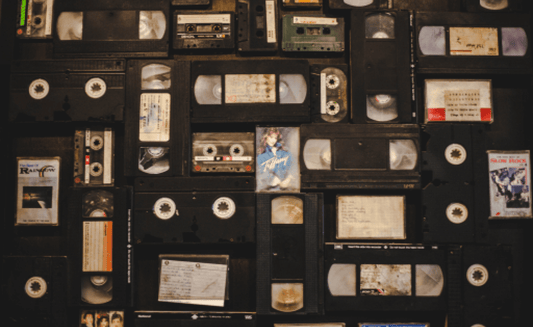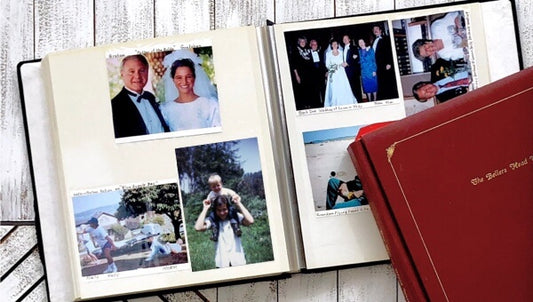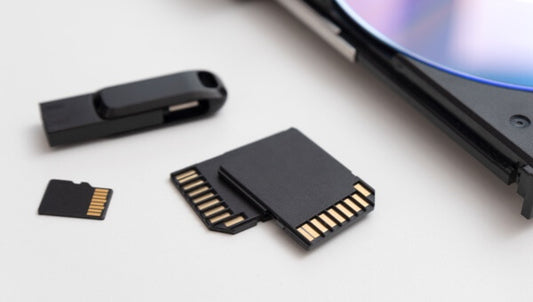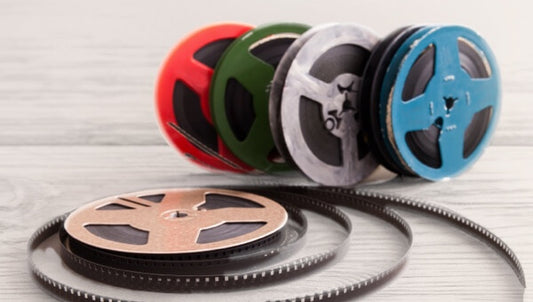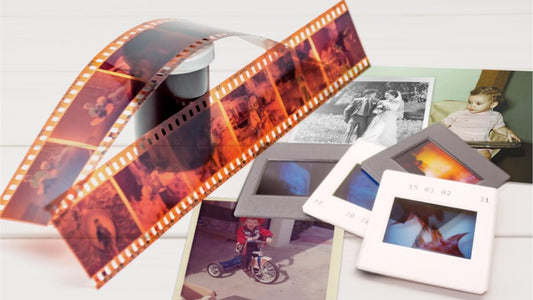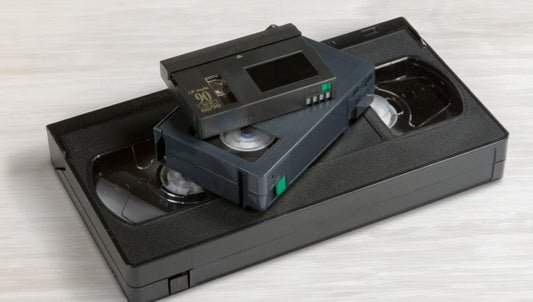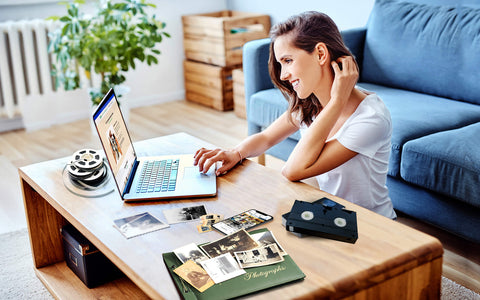Super 8 cameras made it easier than ever to shoot home movies and amateur films. Instead of threading reels manually, users could simply pop in a cartridge and start filming. With built-in light meters, auto exposure, and options for sound, Super 8 cameras became the go-to choice for families, artists, and aspiring filmmakers. In this guide, Capture will break down how Super 8 cameras work, which models are worth looking for today, and how to bring your old footage into the digital age.
Jump to:
What Is a Super 8 Camera?
A Super 8 camera is a film camera designed to shoot on Super 8 film, a smaller-gauge motion picture format introduced by Kodak in 1965. While the film itself delivers compact, high-quality home movies, the camera is what makes shooting easier than older 8mm models.
Unlike traditional film cameras that required manual threading, Super 8 cameras use pre-loaded cartridges, making them far more accessible for beginners and home users. The difference between 8mm vs Super 8 film remains a common topic among collectors, especially when identifying reels for restoration or digitization.

How Do Super 8 Cameras Work?
Super 8 cameras simplified the filmmaking process by introducing cartridge-based film loading. Instead of threading film manually, users could just pop in a Super 8 cartridge and start filming immediately.
Most Super 8 cameras shoot at 18 frames per second (fps), which gives footage its classic home movie look. Some models also offer 24 fps, the professional cinematic standard, for smoother and more polished results.
Exposure can be manual or automatic, depending on the camera model. Many cameras include a built-in light meter to help adjust exposure based on the available light, making them beginner-friendly.
Later versions of Super 8 film supported sound recording. These cartridges featured a magnetic strip on the film and required a compatible camera with an internal microphone.
Most cameras are powered by AA batteries, though some require proprietary battery packs. It's important to check power compatibility when buying a vintage model.
Key Features to Look for in a Super 8 Camera
Not all Super 8 cameras are the same. If you're buying one or pulling an old camera from storage, here are the features that matter most:
- Lens quality: Look for sharp, coated zoom lenses with adjustable aperture. Glass lenses generally offer better clarity.
- Zoom function: Manual or motorized zoom helps frame shots without physically moving the camera.
- Focus system: Choose between manual focus for control or autofocus for ease of use.
- Viewfinder type: Reflex viewfinders let you see exactly what the lens sees, improving framing accuracy.
- Built-in light meter: Built-in meters help auto-adjust exposure - great for changing light conditions.
- Sound capability: Some models support Super 8 sound film (no longer manufactured), but still popular for collectors.
- Tripod mount: Essential for steady shooting, especially if you plan to digitize footage later.

Reviews of Top Super 8 Cameras in 2025
These are some of the top Super 8 cameras you can still buy in 2025, each one offering its own pros and cons as well as key features that you may want to use for yourself.
Canon 1014 XL-S
This Canon model released in 1979 updated specifications from their earlier Canon 514XL model and is famous for being the first-ever Super 8 camera with a CPU that allowed electronic sequence control. In addition, it offers an innovative superimposed viewfinder display, automatic lap dissolve, interval shooting, and other revolutionary features for home movies and professional films alike.
Plus, it’s an upgrade to the auto zoom system first introduced over a decade earlier in the Canon Auto Zoom 814 Super 8. Not only that, but it’s very durable and offers a highly advanced sound quality with audio level control and more while still being easier to use than many alternatives. Plus, it offers slow-motion functionality that’s a lot of fun to play around with.
Users and reviewers appreciate the 10x zoom that’s much better than other popular options like the Canon 310XL Super. Other enthusiasts mention the easy, non-invasive handheld design that was similar to videotape camcorders of the era. In fact, this is widely considered to be among the best Super 8 cameras ever made.

Pros
- Advanced viewfinder info including aperture, exposure warnings, low power, sound recording level, and more
- Manual aperture control
- Built-in timer with 10 or 20-second delay and interval timer for one frame per 1, 5, 20, or 60 seconds
- Modern camcorder design
Cons
- Viewfinder could be clearer
- Lens scratches easily
Beaulieu 4008 ZM II
This 1971 Super 8 movie film camera is known as one of the best Super 8mm camera options to ever be produced. In fact, it was made specifically as a silent Super 8 movie camera and is still popular among short film enthusiasts. The reason it’s so cherished is because the lens quality is exceptional and the camera itself is highly customizable.
For example, this Beaulieu 4008 ZM II has interchangeable lenses, macro zoom, and adjustable frame rate with several options between single frame and 70 fps. There are also tons of great accessories and adapters designed for this prized collector’s item. The viewfinder has indicators for film transport, exposure, and battery check as well.
The one downside of this awesome camera is that it can be quite expensive, especially when you want an additional zoom lens or other accessories. In fact, for a good, refurbished option, you could pay $1200 or more. However, you may be able to find one for $400 to $500 too.

Pros
- Highly customizable for professional video quality
- Frame rates of single frame, 2, 4, 8, 18, 24, 36, 50, and 70 fps
- Fantastic viewfinder with diopter correction and exposure indicators
- Great iconic design
Cons
- No sound ability
- Expensive
Nizo 801 Macro

Pros
- Easy to use with a comfortable handle
- Innovative automatic lapse system
- Very durable
Cons
- Lens shows flares easily so not great for all lighting
- Sound quality is below average for a mid-70s Super 8 camera
Kodak Instamatic M4 Movie Camera
This Kodak Super 8 film stock camera came out earlier than the others on our list and was released in the mid 60s. With a Kodak Ektachrome lens, daylight filter, and easy to use design that made it simple to insert and remove film cartridges, this model propelled the industry forward.
It’s affordable and easy to find these days as well. Plus, it’s one of the easiest Super 8 cameras to use with minimal buttons and switches. That means it’s just about as close to point and shoot as you can get. One of the coolest things about this camera is the interchangeability and multi-purpose lighting system that can accept all sorts of flashes.
The design is not as comfortable as competing models by Eumig or Minolta, but the high-quality and easy-to-use design as well as the affordability is what lands this above those on this list. It also doesn’t allow for easy lens changing like later 70s models.

Pros
- Affordable in 2024
- Easy to use (perfect for beginners)
- Great flash customizability
Cons
- Not comfy to use
- No easy lens changing ability
Bauer C900XLM
This model was released in 1982 and uses silent or sound Super 8 film cartridges. It offers a zoom ratio of 8.5x and manual split image focusing. The adjustable lens, viewfinder, and modern camcorder design make this one of the best Super 8 cameras you can buy simply because it is built upon the older models that came before it like the Bolex H-8 and Nizo 801.
The camera has a back-light function as well as a slow-motion option and can utilize remote control or headphone plug-ins. It’s compact, lightweight, and closer to modern digital cameras than others on our list as far as usability, aesthetics, and design.
Negative reviews typically point out the inadequate zoom function that’s not as good as some competitors. In addition, it may be harder to find in great condition because it’s not exceptionally durable, probably because of the many features contained in the small case.

Pros
- Modern compact design
- Adjustable lens
- Excellent viewfinder
- Good sound quality
Cons
- The zoom function isn’t great
- Not durable and may be hard to find in great condition
Where to Buy Super 8 Cameras in 2025
Looking for a Super 8 camera in 2025? While they’re not as common as they once were, you can still find great options if you know where to look:
- Online Marketplaces: eBay, Etsy, and Facebook Marketplace often have affordable listings. Be sure to check seller ratings and request photos or video demos before buying.
- Camera Retailers: Sites like KEH Camera, Adorama, and B&H Photo Video offer tested and refurbished models, sometimes even brand new ones.
- Local Camera Shops: Your local photography store might have vintage inventory or help you track down specific models.
- Garage Sales & Antique Shops: Hidden gems can show up at estate sales, flea markets, or in your local classifieds.

Preserve Your Super 8 Memories for the Future
Super 8 cameras were once the most popular way to capture family memories. While that may not be the case anymore, they’re still a fun, nostalgic, and unique way to capture new memories. Just make sure you do your research when comparing different options because some have special features that make them easier to use, offer higher quality, or are simply available at a cheaper price.
Whether you’re filming something new or have vintage reels tucked away, Capture can help you convert Super 8 film to digital so your memories are easier to enjoy, share, and preserve for years to come.





